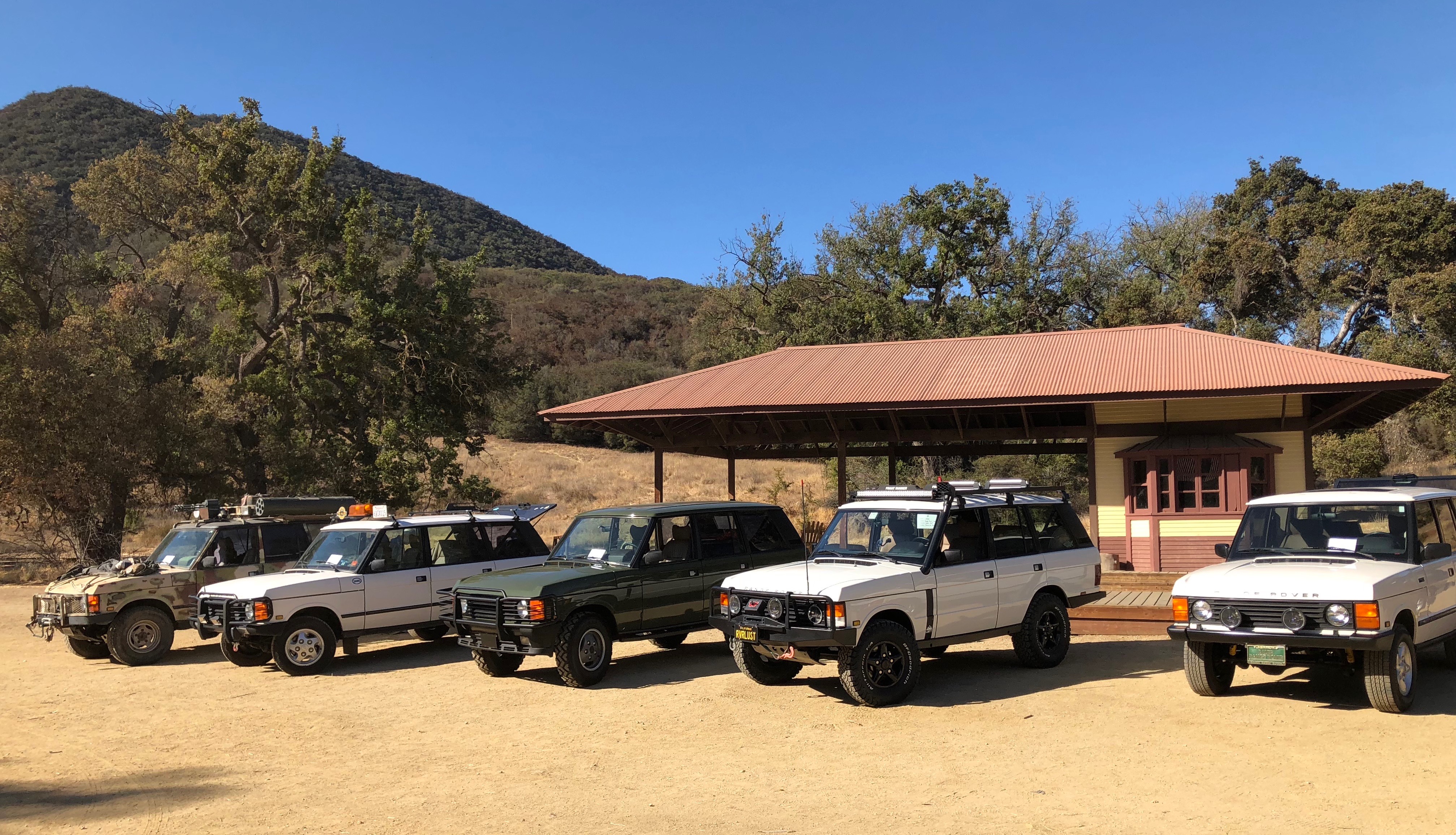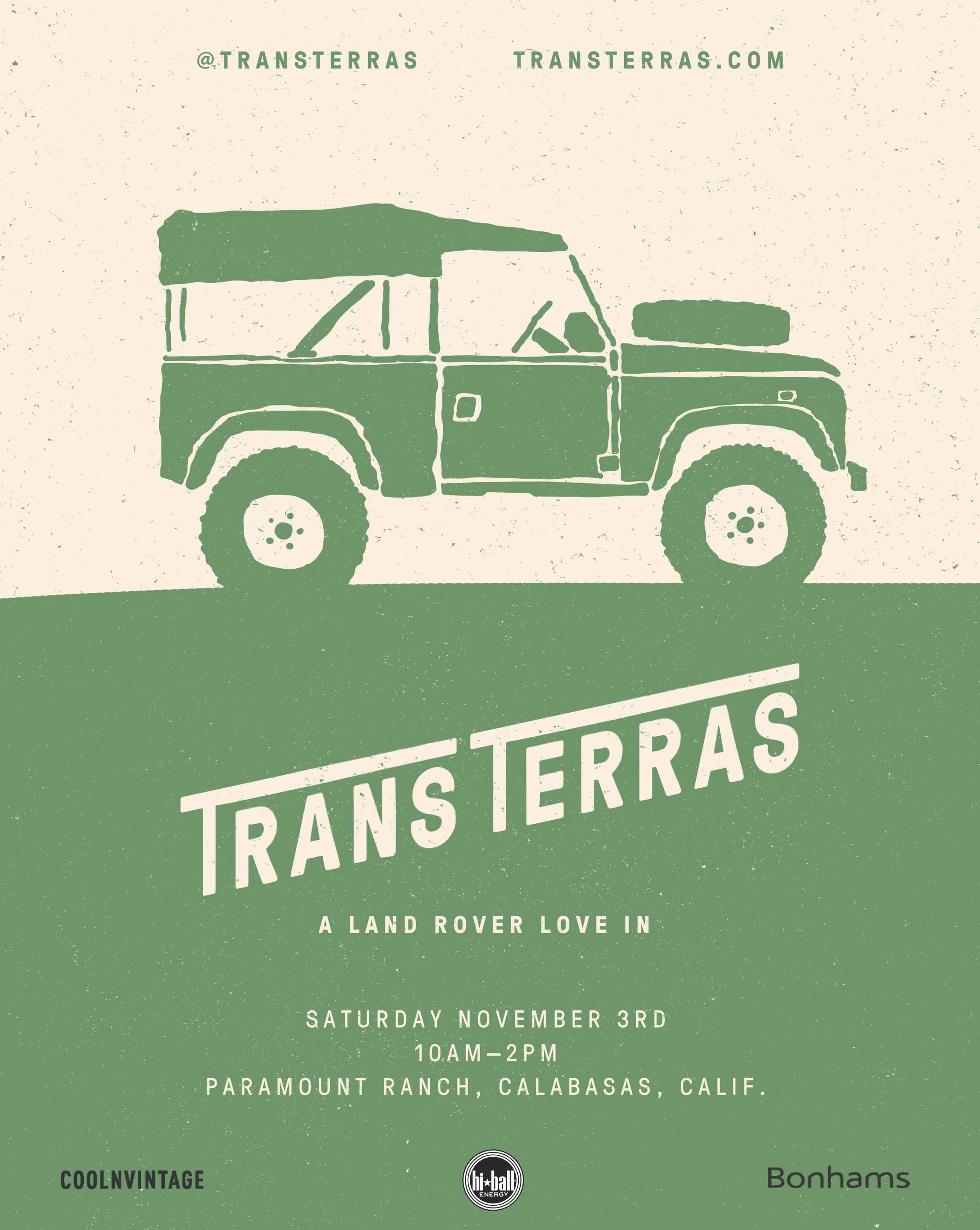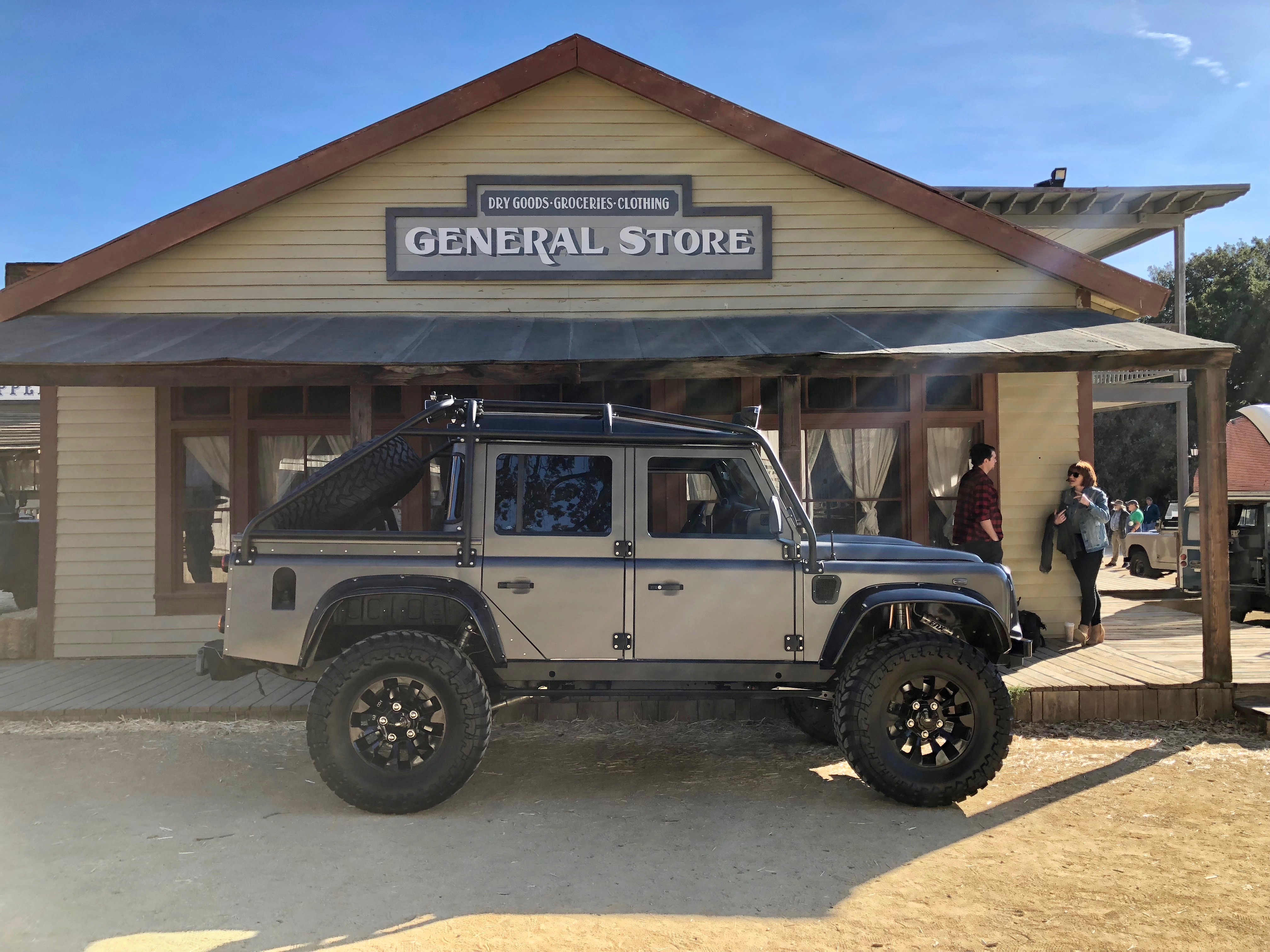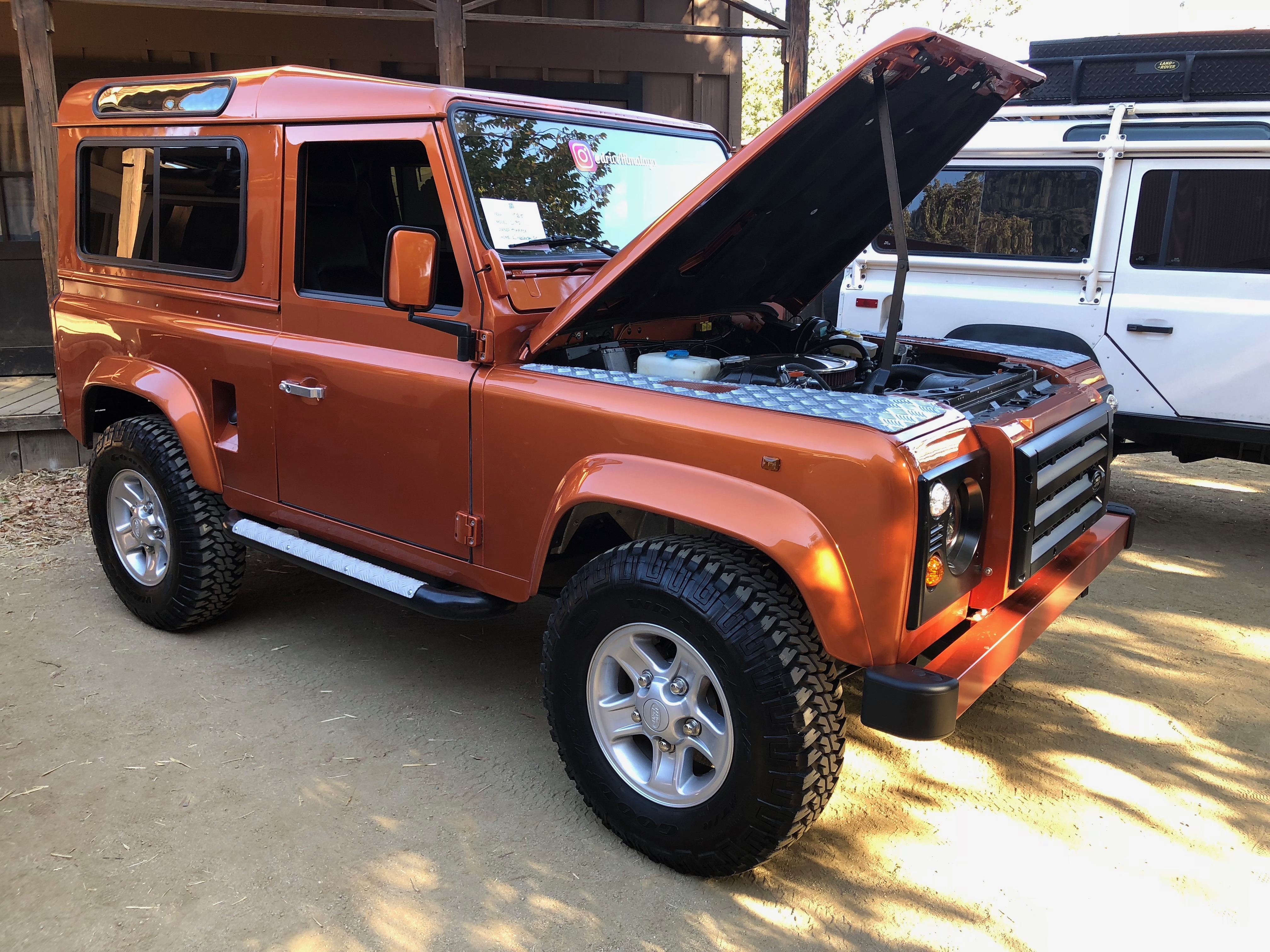Editor’s note: November is Import Month on the ClassicCars.com Journal. Get all the news you could ever need about German, English, French, Italian, Japanese and lots of other cars at our dedicated page.
Jared Zaugg and Brooke Roner bring their shared gift of entertaining motorsports zealots (Remember the fabulous Legends of the Motorcycle at the Half Moon Bay Ritz Carlton between 2006 and 2008?) into one of SoCal’s sacred venues for road racing, film making and adventure seaking.
Why has no one ever organized a party for the fans of the legendary (yeah, I know, but it was the official transport for many legends you remember) Land Rover?
Jared and Brooke are the answer to such dilemmas.
Before 1950 there were ex-GIs selling European sports cars out of gas stations and repair shops in several locations around the L.A. basin. The postwar studio-contract era left Sunset Boulevard spotted with mighty Deusenbergs, elegant Packards, and R-rated icons of French coachwork, suddenly out of favor and informally offered for a few hundred dollars.
With them went the Hollywood-Beverly Hills cruise nights, replaced by Malibu’s coastal canyons in Europe’s more exciting, if less dramatic, cars, even first generation personal off-road cars (trucks) just for the sport of driving.
In September of 1948, Al Moss (Moss Motors in Goleta) bought an MG TC and in January 1949 organized California’s first sports car rally. Participants in the run through the canyons included Keenan Wynn (already a noted dry lakes hot rod racer), Larry Parks (a recent Oscar nominee for The Jolson Story) and Tom Bamford(character actor and stunt driver) — all three were veteran motorcycle racers. A competitor consensus inspired the founding of the Foreign Car Group as a sanctioning body for guys who played with sports cars.
John von Neumann was a Viennese immigrant, afficionado of the great European classics, and a Valley used car salesman with Roger Barlow’s International Motors (L.A.’s largest import car dealer). Von Neumann conspired with his boss to form the California Sports Car Club (forever known as Cal Club) for the racing contingent.
The club sanctioned its first competition on a set of roads at Palos Verdes Point in August 1947 with von Neumann’s exotic Jaguar SS100 posting fastest timed lap around the winding roads of the new development. Southern California’s coastal mountains presented a viable simulation of the famous European racing circuits.
Racing sports cars were virtually all licensed for the street in the early 1950s and were driven to and from events. It began to get a little scary. Mulholland Drive became a practice course for racers and would-be racers.

Paul Newman and Steve McQueen were both real racers and became famous for their exploits among the Mulholland after-midnight set. James Dean was a ridge-line phenom in his Porsche Speedster and when Giant afforded him a Porsche 550 Spyder the risks went stratospheric.
A “less public” place for racing rehearsals was soon required — we hesitate to say “safer.”
The Cal Club held its first closed circuit race at the Palm Springs Airport in April 1950. There was an event in Apple Valley in 1951; racing circuits were laid out on blocked-off urban streets or public airports like those at Torrey Pines north of San Diego, and Palm Springs. During the summer of 1955 the west coast Singer Owners Club (a rare-in-America English car) organized the Agoura Hill Climb on a private dirt road. The event brought 160 entries and 2,000 spectators for a brief blast up the twisting dusty incline. Cal Club got the message.
An ex-pat Brit racer named Ken Miles was a mechanic for Barlow. After some groundwork by Cal Club board member Joe Weissman, Miles and Dick Van Laanen took a Volkswagen demonstrator out to the Paramount Movie Ranch, where they met club race coordinator Al Papp and proceeded to layout a racing circuit through the brush and live oaks — at speed.
According to Van Laanen, Miles only drove “at speed” and used up the new Volkswagen in the challenging search for a racecourse.

Rancho Las Virgenes, the 2,700-acre parcel of the 17,700-acre Rancho Malibu Topanga Sequit 1802 land grant, became part of Paramount Pictures in 1927. For the next 25 years it hosted many of the great characters from the art of film. It became colonial Massachusetts for The Maid of Salem, ancient China in The Adventures of Marco Polo, a South Seas Island for Ebb Tide, among its over-200 film and television productions, and with at least as much drama became a little piece of Sicily for the real life Targa Florio-like Paramount Ranch Road Racing Circuit.
There were only seven races at the Ranch, two for United States Auto Club stock American sedans, and five for Cal Club sports cars. The entry lists are a who’s who of American racing with a fascinating orchestration of movie and television personalities everyone recognizes. Mostly it was fun with cars and characters. An amateur status in a racecar was only made possible by a professional success in some real life diversion.
The National Parks Service has managed Paramount Ranch for years, and shooting locations are now found in gifted imaginations and digital files. Some physical history remains on the Ranch, even some pavement of the old racing circuit can be found. The historic canyons that carried fans and racers from the Ventura Highway or the Pacific Coast Highway to the Mulholland Highway are active today — or tonight — and the Ranch parking lot remains a cooling-off destination for overheated Jaguars and their turbocharged modern counterparts.
There are countless (even unseen) gatherings of car and motorcycle enthusiasts focused on the pleasure of what W.O. Bentley, the creator of the cars that bear his name, once called “The intoxication of the dreaded tire slip.” The Ferrari and Lamborghini Clubs, various Porsche Gruppes and all sorts of “tuner” car sets continue to use the Malibu canyons in search of that natural “high.”
But where do you gather your radical-angle off-road adventurers? Why not a Malibu off-road movie capital — like the Paramount Ranch?
Back in the day, there were ex-GI jeeps all over the place, but only the foreign car importers could get you a Land Rover and access to thousands of pages of empire adventures. Even today, the early Series I and II Rovers remain rare on the ground, but there are fans, aficionados and history zealots who believe they live among those volumes.
By way of introduction: First there was a silhouette sketch in the sand of a Welsh beach; it was 1947. The war had ended and survivors knew they were capable of anything. In 1952 three lads at Cambridge proposed an overland drive from London to Singapore as proof of concept — oh yeah, there was that other guy from Oxford, too, for press. That incredible journey continues to be a great Land Rover story.
But we can remember the first verification of the Land Rover Discovery capabilities during the brutal escapades of the Camel Trophy adventures. They were the first time we saw “production” vehicles operating (proving) a 40-inch wading depth (fast-running river surface just below the base of the side windows), never mind all the mud and rock and jungle involved in 20 years of Land Rover extreme capability explorations between 1981 and 2000, with Discovery as the primary vehicle between 1990 and ’97.
But where can I take my history-saturated 4 x 4 for a well-considered weekend outing among like-minded fans. Bring in “The Producers,” Jared and Brooke, with ideas steeped in feerless energy for just such a twenty-first century full-plate time challenge. “Trans Terras, A Land Rover Love In” was just such a day of discovery. There were 50 Land Rover variations present out of 56 entries for this first itteration of the idea.


“Trans Terras, A Land Rover Love In” was just such a day of discovery. There were about 40 Rovers present for this first iteration. And each arrived carrying enthusiastic and knowledgable characters looking for contacts, maps and mechanical solutions.
In the mix were adventure-bruised relics, home-brew survival referbs and precious full concours restorations or re-creations. There was a softly patinaed 1989 Australian-built “Perentie” with its bullet-proof Isuzu 3.9-liter Isuzu 4-cylinder diesel — and stories.
Himalaya Worldwide brought several remanufactured and updated vehicles with new-century developments on recent Land Rover Discovery structures. They were beautifully finished, brilliantly engineered and luxuriously comfortable (really!). The company is taking orders at its website.
This first Trans Terras was a static show, but negotiations are on-going for access to local 4 x 4 trails and even SoCal collectors and story tellers. All were welcomed and engaged by new-found pals — many of whom had already faced the multiple challenges of off-roading in vintage machinery.
Sadly, these were the last photographs taken of the historic Paramount Ranch. It burned to the ground during the Malibu-area fires just weeks later. Stay in touch with transterras.com for future plans — and locations.






Sadly – The Paramount Ranch burned to the ground today as part of the brush fires in Southern California.